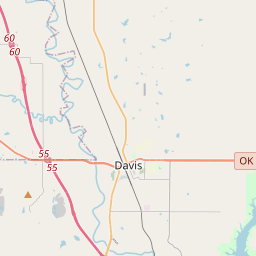Civilian Conservation Corps and Platt National Park
Historical marker location:






Sulphur, Oklahoma. 1933 - 1942
- March 31, 1933: President Franklin D. Roosevelt signs the Emergency Conservation Work (ECW) Act into law, establishing the Civilian Conservation Corps as part of his New Deal program.
- April 5, 1933: The CCC is officially launched, providing employment opportunities for unemployed young men between the ages of 18 and 25.
- 1933-1942: The CCC enrolls over 2.5 million young men from economically disadvantaged families, providing them with jobs, vocational training, and relief during the Great Depression.
Camp Life: CCC enrollees live in camps located in rural areas and work on various conservation projects across the United States. They receive food, shelter, clothing, and a small wage, with a portion of their earnings sent back home to support their families.
Conservation Projects: The CCC undertakes a wide range of conservation projects, including reforestation, erosion control, trail construction, forest fire prevention, wildlife conservation, historic site restoration, and the development of public parks.
Collaboration with Other Agencies: The CCC works in collaboration with various federal agencies, including the National Park Service, U.S. Forest Service, Bureau of Land Management, and Soil Conservation Service, to implement conservation programs and projects.
Educational and Vocational Training: In addition to their work, CCC enrollees receive educational and vocational training, such as literacy classes, courses in conservation and forestry, and technical skills development.
Military Training: During World War II, the CCC shifts its focus to providing military training for its enrollees, preparing them for military service.
- July 1, 1942: As the United States transitions into wartime efforts and the economy improves, the CCC gradually loses its significance. The program officially ends with the termination of new enrollments.
The Civilian Conservation Corps played a significant role during the Great Depression, providing employment, relief, and skills training to young men while accomplishing vital conservation work across the country. The program's legacy can still be seen today in the numerous parks, forests, and other public lands that were developed or improved through the efforts of CCC enrollees.
During the Great Depression, thousands of farmers in Oklahoma were displaced from their land due to drought and dust storms. Many of these farmers migrated to California in search of work, a journey that became known as the "Okie migration."
In the early 19th century, the United States government pursued a policy of Indian Removal, which resulted in the forced displacement of many Native American tribes. The Chickasaw tribe, who occupied the land that would become Murray County, were relocated to present-day Oklahoma as part of this policy. They eventually settled in the area permanently and established their own government.
Murray County was officially founded in 1907, when Oklahoma became a state. It was named after William H. Murray, a prominent politician and the first Speaker of the House for the Oklahoma Constitutional Convention. The county quickly developed into an agricultural hub, with farming and ranching becoming the primary industries. The discovery of oil in the early 20th century further fueled the county's economic growth.
Over the years, Murray County has experienced both challenges and successes. The Great Depression hit the area hard, causing many farms to fail and leading to widespread poverty. However, with the advent of World War II and subsequent economic recovery, the county experienced a resurgence. Today, Murray County is known for its natural beauty, including the Arbuckle Mountains and many recreational areas. The county continues to thrive through a combination of agriculture, tourism, and small businesses.
Murray County Timeline
This timeline provides a glimpse into the major events and milestones that have shaped the history of Murray County, Oklahoma.
- 1907: Murray County is established as part of the state of Oklahoma.
- 1911: The town of Sulphur is incorporated.
- 1920: The area sees an oil boom, leading to rapid growth and economic development.
- 1930s: The Great Depression impacts the area, causing significant economic hardship.
- 1940s: Murray County becomes a popular tourist destination due to the natural beauty of its springs and parklands.
- 1960s: The area experiences another economic boom with the discovery of additional oil and gas reserves.
- 1970s: The Chickasaw National Recreation Area, located in Murray County, is established.
- 1980s: The area expands its tourism industry, attracting visitors for outdoor activities and cultural events.
- 2000s: Efforts are made to preserve and promote the rich Native American heritage and culture of the Chickasaw Nation.